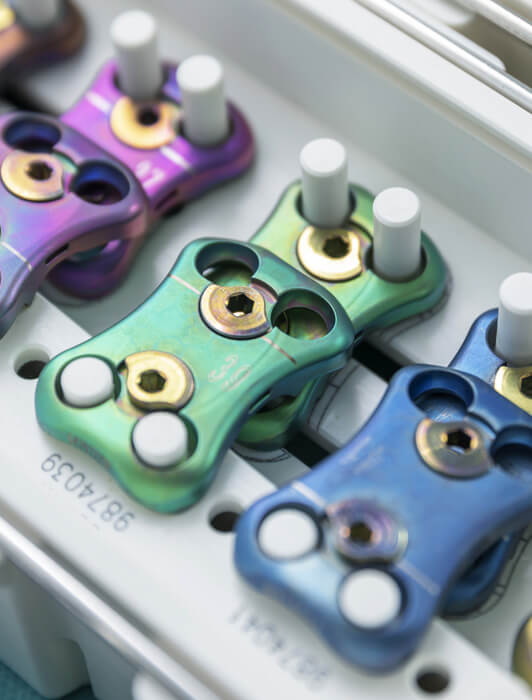The surgeon makes a horizontal incision on one side of the neck to access the fascia of the platysma muscle. Immediately below is the sternocleidomastoid muscle (NDE), on the side, and the thyrohyoid, sternohyoid, and omohyoid muscles in medial position. These are carefully dissected, leading directly to the anterior vertebral space.
It is necessary to be very careful when working around the vasculo-nervous bundle (consisting of the carotid, jugular, and vagus nerve), the esophagus, and the medial airway. Finally, we find the prevertebral fascia, and flanking the vertebrae and discs, and the longus colli muscles, which we must separate to access the discs.
At this point, the microdiscectomy is carried out: using a microscope, the disc to be treated is cut and removed, until reaching the posterior common ligament, which is released, in order to visualize the dura that surrounds the medulla. This ensures that the compression on the medulla or nerve root has been removed.
With the help of an intraoperative fluoroscope, the appropriately sized interbody cage is placed, and in most cases a metal plate, anchored to the upper and lower adjacent vertebrae, then the sutures are performed.
In more complex cases in which the spinal compression is caused by the vertebra, the entire vertebral body can be removed and replaced with a larger device.
There are multiple types of interbody cages: solid or with bone graft, titanium or polymer (PEEK), with different types of anchorage. These must be adapted to the individual characteristics of each patient.


